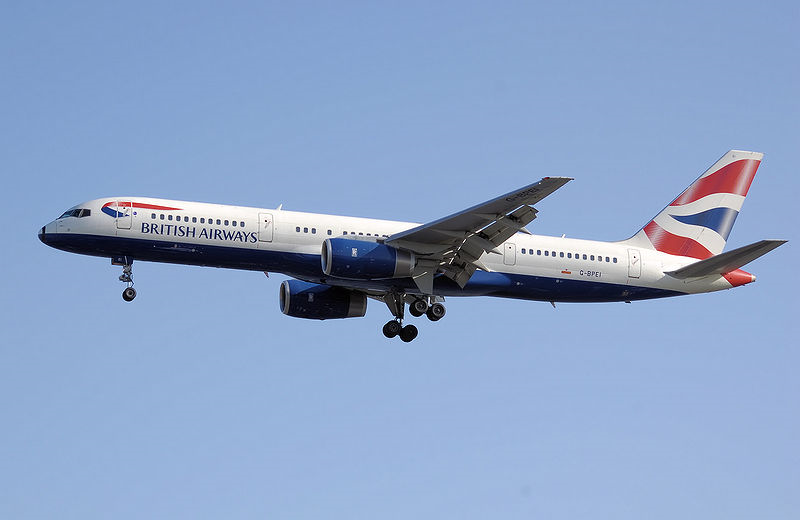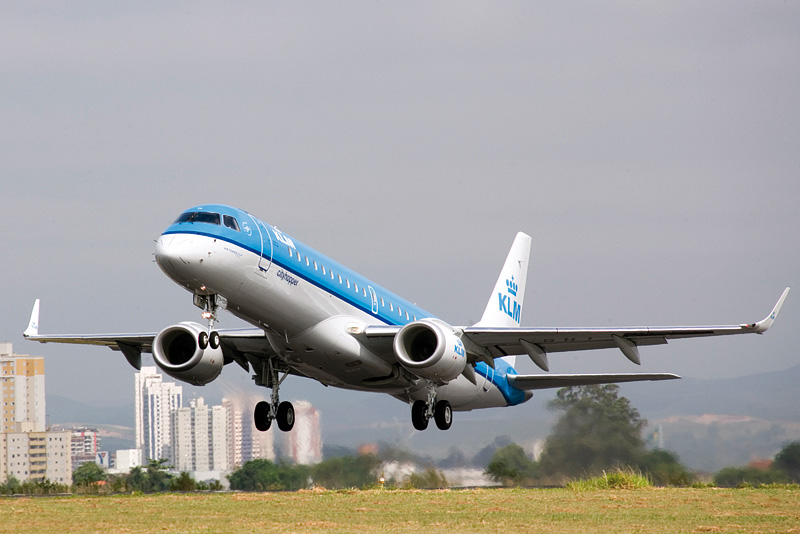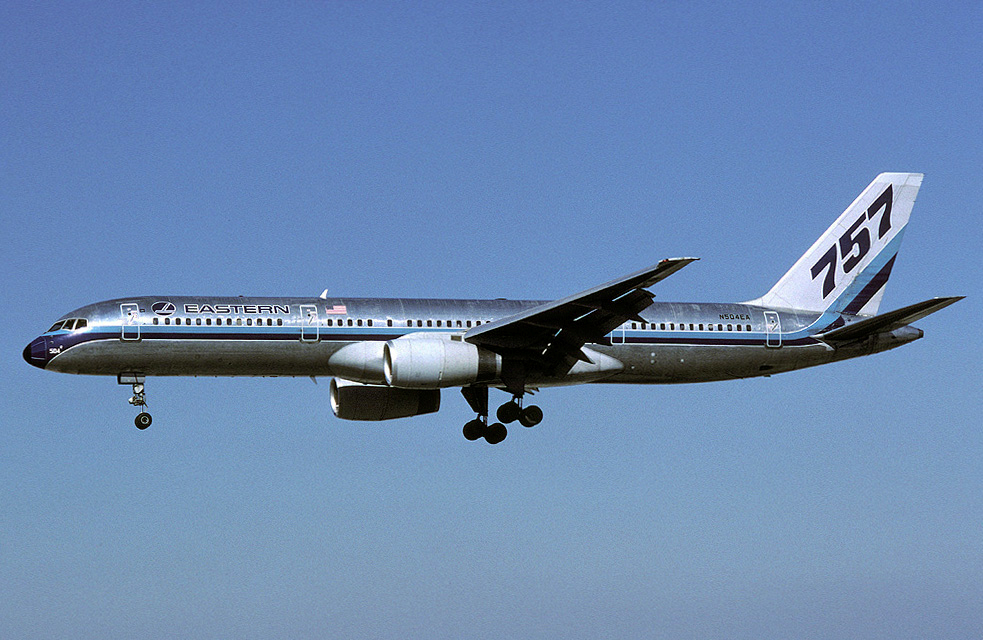Leeham News and Analysis
There's more to real news than a news release.
 Leeham News and Analysis
Leeham News and Analysis
- Bjorn’s Corner: New engine development. Part 4. Propulsive efficiency April 19, 2024
- Boeing unlikely to meet FAA’s 90-day deadline for new safety program April 18, 2024
- Focus on quality not slowing innovation, says GKN April 18, 2024
- Boeing defends 787, 777 against whistleblower charges April 17, 2024
- Dissecting Boeing CEO’s statement next new airplane will cost $50bn April 15, 2024
Odds and Ends: U-Turn Al does it again, delays A350; rate cuts for 747-8, A330; A380 future delivery
A350 delivery delayed: U-Turn Al Baker, the CEO of Qatar Airways, has once again become a pain in the tailpipe to an OEM. The delivery of the first Airbus A350-900, set for Saturday, has been indefinitely postponed. Qatar posted this on its Facebook page:
With the imminent launch of the new Airbus A350 programme, both entities are committed to introducing the A350 very soon. #QatarA350.
Posted on December 10, 2014 by Scott Hamilton
Book Review: American Airlines, US Airways and the Creation of the World’s Largest Airline
American Airlines, US Airways and the Creation of the World’s Largest Airline, By Ted Reed and Dan Reed, c.2014. Publisher: McFarland (website), 800-253-2187. $39.95 on Amazon.
This is the first book about the merger of American Airlines and US Airways, a combination completed only last December.
 Ted Reed is the aviation writer for the web’s The Street. He was also the aviation reporter for The Miami Herald and the Charlotte Observer and worked for US Airways in communications when the airline was the pre-America West Airlines partner. I’ve known Ted for many years and he often calls me for information and comment on The Street. I had the honor of doing some proof reading of this book.
Ted Reed is the aviation writer for the web’s The Street. He was also the aviation reporter for The Miami Herald and the Charlotte Observer and worked for US Airways in communications when the airline was the pre-America West Airlines partner. I’ve known Ted for many years and he often calls me for information and comment on The Street. I had the honor of doing some proof reading of this book.
Posted on October 30, 2014 by Scott Hamilton
Part 2: Boeing 757: Airbus A321neoLR as a replacement on long and thin routes
Subscription required.
By Bjorn Fehrm
Part 2 of 3
Introduction
In Part 2 of our three-part 757 Replacement analysis, we take a close look at Airbus’ new 97 tonnes take off weight A321neo, revealed by Leeham News and Comment October 21. We call the 97t airplane the A321neoLR (Long Range); Airbus has yet to name the aircraft, which it began showing to airlines last week.
 We analyze the A321neoLR’s capabilities and limitations when compared to the aircraft it intends to replace, the Boeing 757-200W. We have chosen to do so using a real airline configuration as opposed to an OEM’s typical seating layout. By comparing the 757-200W and the A321neoLR over the route structure that United Airlines is using the 757 today, we can better see the characteristics of the A321neoLR and what operational consequences the differences between the types would mean for the airlines. Before we start, a short recap of Part 1 about the 757 and its replacement candidates. Here is what we found:
We analyze the A321neoLR’s capabilities and limitations when compared to the aircraft it intends to replace, the Boeing 757-200W. We have chosen to do so using a real airline configuration as opposed to an OEM’s typical seating layout. By comparing the 757-200W and the A321neoLR over the route structure that United Airlines is using the 757 today, we can better see the characteristics of the A321neoLR and what operational consequences the differences between the types would mean for the airlines. Before we start, a short recap of Part 1 about the 757 and its replacement candidates. Here is what we found:
- the seating capacity of the A321 is within 10 seats of the 757-200 in a standard configuration; the 737 MAX9 is trailing with about 20 fewer seats.
- the myth about the strong engines of the 757 is just that, a myth.
- the good field performance of the 757 is coming from its wing more than any advantage on the engine side
- the A321neo and 737 MAX9 were hindered in their capability to replace the 757 for long and thin international routes by characteristics that can be changed. For the A321neo, this may be accomplished with rather modest changes to Max Take Off Weight (MTOW) and tankage. For the 737 MAX9, more elaborate changes to the wing and engines are required, both hard to do.

Figure 1. Boeing 757-200 of British Airways which launched the 757 together with Eastern Airlines 1983. Source: Wikimedia.
Summary, Part 2
- We will now look in detail on the changes Airbus is doing on the A321neoLR, what each change brings and any restrictions that remain.
- We will also detail why we think it will be harder for Boeing to match the A321neoLR with a 737 MAX9 development.
- We detail prime, present 757W long-thin routes.
- We present 757W international, A321neoLR and 737 MAX9 “long range” configurations.
- We provide economic comparisons such as Payload-Range charts and Fuel consumption per trip and per seat diagrams.
In the final Part 3, will look at Boeing’s alternative to an A321neoLR, a clean sheet New Single Aisle (NSA) and a prospective Small Twin Aisle (STA) design and how much such an approach would surpass the A321neoLR on medium and long haul networks and when it could be available.
Posted on October 22, 2014 by Bjorn Fehrm
E-Jet, the project that shaped Embraer
By Bjorn Fehrm
Introduction
In a recent visit to Embraer in Brazil we got a thorough brief on the background and decision making around the E-Jet and E-Jet E2 programs. We have written about these programs before but we will now cover how they came about, what was the program objective when the decision was taken and how it panned out. Both programs have had and will have a profound influence not only on Embraer but the whole civil aviation segment between 70-150 seats. It is worth looking into how Embraer, once an also-ran in the regional market, rose to the top three spot in civil aviation after Airbus and Boeing and how EMB intends to stay there.
Summary
- American Airlines was part of changing history in regional jets, long before in single aisle.
- E-jet started as a product program and soon put Embraer on a steep learning curve how to support an E-jet in the market above 50 seat regional jets.
- Embraer today rates their support second only to Boeing and Airbus.
- The requirements for the mid-life update of their E-jet, the E2, is all about delivering a mature product. This has shaped all aspects of the program, from cooperation with suppliers to how testing and qualification is done.
Posted on October 20, 2014 by Bjorn Fehrm
Part 1–Boeing 757: An analysis of facts and myths
Subscription required.
By Bjorn Fehrm
Part 1 of 3
Introduction
The Boeing 757 was developed in the late 1970s as a replacement for Boeing’s popular 727 mid-range single aisle aircraft. Starting from the smaller 727, it ultimately grew to 180 to 230 seat capacity and US transcontinental range. With initial orders from Eastern Airlines and British Airways, the aircraft nonetheless had poor sales through most of the 1980s, picking up with a surge of orders in 1988-1990 when major deals were announced from American, Delta and United airlines.
Following the 1991 Persian Gulf War and recession, orders plunged until the mid-decade with a respectable resurgence. After 9/11, sales dried up and Boeing terminated the program.
Summary
- The 757 program had slow sales in its first decade, robust sales for a few years then declining sales through most of the 1990s.
- Sales were respectable in the late 1990s but dried up after 9/11.
- Boeing efforts to boost sales with the 757-300 were a failure–only 55 were sold. 757F sales were a moderate success.
- The 757-200 had strong engines for its time (especially the Rolls Royce equipped models), we dissect if this is still true.
- With the 757 being the only narrow-body with trans-Atlantic range, what is missing from today’s Airbus A321 and Boeing 737 MAX9 to make the cut? What can be done with small changes will be answered in part 2.
- How will a future clean sheet NSA perform compared to these three? How much of a game-changer will a clean sheet design be if it enters service 2025? We look at the answers in part 3.
Posted on October 15, 2014 by Bjorn Fehrm
Airbus, American Airlines, Boeing, CFM, Delta Air Lines, Pratt & Whitney, Premium, Rolls-Royce, US Airways
737 MAX, 737-9, 757, 757 Winglet, 757W, 777-300ER, A320NEO, A321NEO, Airbus, American Airlines, Boeing, CFM, Continental Airlines, Delta Air Lines, GTF, Pratt & Whitney, Rolls-Royce, United Airlines
After-market support becoming key to winning engine orders
Maintenance and power-by-the-hour parts and support contracts are increasingly becoming the deciding factor in deciding which engines and which airplanes will be ordered—it’s no longer a matter of engine price or even operating costs, customers of Airbus and Boeing tell us.
Ten years ago, 30% of engine selection had power-by-the-hour (PBH) contracts attached to them. Today, 70% are connected, says one lessor that has Airbus and Boeing aircraft in its portfolio, and which has ordered new aircraft from each company.
“We’ve seen a huge move in maintenance contracts,” this lessor says.
Posted on August 25, 2014 by Scott Hamilton
Airbus, American Airlines, Boeing, Bombardier, CFM, Comac, CSeries, Embraer, GE Aviation, Irkut, Mitsubishi, Pratt & Whitney, Rolls-Royce
737 MAX, 737NG, 747-400, 767, 777, 777-200LR, 777-300ER, 777X, 787, A320ceo, A320NEO, A330ceo, A330neo, Airbus, American Airlines, Boeing, Bombardier, C919, CF34, CFM, CFM 56, Comac, CSeries, E-Jet, E-Jet E2, Embraer, Frontier Airlines, GE Aviation, GECAS, GEnx, GTF, Irkut, LEAP, Lufthansa Airlines, MC-21, Mitsubishi, MRJ, Pratt & Whitney, Republic Airways Holdings, Rolls-Royce
Farnborough Air Show, July 14: Orders Summary
Here are orders that were announced on the first official day of the Farnborough Air Show (at least the ones we’ve seen from Seattle–feel free to add to the list if we’ve missed any):
- Airbus: from Air Lease Corp: 25 A330neos and 60 A321neos. British Airways converts 20 A320neo options to firm orders; 20 A320neos from AerCap.
- ATR: NAC places firm order for 75 ATR 42-600s.
- Boeing: Announced what had been leaked before the show–30 737-8s from Monarch Airlines, an important “flip” from incumbent Airbus; six 737 MAX 8s and four Next-Generation 737-800s from Okay Airlines; six 787-9 Dreamliners and five additional 737 MAX 9 from lessor Avolon.
- Bombardier signed LOIs with: Chinese airline Loong Air for 20 CS100s; Petra Airlines of Jordon for two CS100s and two CS300s; and it converted a previously announced LOI for Falcon Air of Abu Dhabi for two CS300s to a firm order. BBD also revealed a previously unidentified follow-on order for three CS300s from Air Baltic. This was announced at the Singapore Air Show.
- CFM International won the large engine order from American Airlines to power its A319neo/A321neo fleet. We reported June 19 that this deal would come down to commercial terms, according to American CFO Derek Kerr. Given CFM’s position on the Boeing 737-800, 737-8 and Airbus A319ceo; and GE Aviation’s presence on AA’s widebody fleet, plus whatever maintenance agreements also exist, CFM/GE was in a position to offer commercial terms that Pratt & Whitney could not when offering the GTF. Also as previously noted, CFM won the easyJet A320neo family order for 270 engines.
- Embraer: 50 “reconfirmable” and 50 options for the E-175-E2 from Trans States Airlines of the USA.
- Mitsubishi: Eastern Airlines signed an MOU for 20 firm and 20 purchase rights for this MRJ90. Parenthetically, we’re happy that Mitsubishi also announced it will test the MRJ in Moses Lake (WA).
- Pratt & Whitney won the GTF order for VivaAerobus’s 40+40 A320 fleet and the V2500 for 12 A320ceos.
Things of note:
- Airbus predicts sales of 1,000 A330neos, plans two year overlap in production of A330ceo. EIS 4Q2017.
The sniping between Airbus and Boeing continues:
- “The only way a passenger will know he’s not on a 787 is that the seats will be bigger,” says John Leahy of the A330neo vs the Boeing 787. Leahy gives good quote.
- Ray Conner, CEO of Boeing Commercial Airplanes, calls the A330 an airplane of the 1980s. (Careful, Ray: the 737 MAX and the 747-8 are airplanes of the 1960s….)
Posted on July 14, 2014 by Scott Hamilton
Alaska-Delta Battle in Seattle comes at the expense of United, Southwest
National media and trade magazines are paying attention to the increasing battle between Alaska Air Group (Alaska Airlines and Horizon Airlines) and Delta Air Lines (including its regional airline partners) in the Battle in Seattle as the latter dramatically increases its presence here, but the focus appears to be on the wrong parties.
While the headlines and stories point to the “Delta challenge” to Alaska, a review of the traffic statistics and market share data provided to us by Sea-Tac Airport yesterday show that Alaska and its regional sibling, Horizon Air, and Delta with its regional partners are growing at the expense of United Airlines and Southwest Airlines.
Southwest sticks with continuous hub/point-to-point as core business strategy
American Airlines plans to shift from continuous hubbing at three of its major cities–an operational process where flights flow throughout the day–to return to traditional peak-and-valley hubbing. But Southwest Airlines, despite many significant changes to its business model over the years, will stick with continuous hubbing which has been at the core of its business model since the airline was founded in 1971.
After attending the American Leadership Council Wednesday in Dallas, we went across town on Thursday to talk with Gary Kelly, CEO of Southwest Airlines. One of the first things we asked him was about the American shift, which we wrote about yesterday.
Posted on June 20, 2014 by Scott Hamilton
Email Subscription
Twitter Updates
My TweetsAssociations
Aviation News-Commercial
Commentaries
Companies-Defense
Resources
YouTube
Archives
- April 2024
- March 2024
- February 2024
- January 2024
- December 2023
- November 2023
- October 2023
- September 2023
- August 2023
- July 2023
- June 2023
- May 2023
- April 2023
- March 2023
- February 2023
- January 2023
- December 2022
- November 2022
- October 2022
- September 2022
- August 2022
- July 2022
- June 2022
- May 2022
- April 2022
- March 2022
- February 2022
- January 2022
- December 2021
- November 2021
- October 2021
- September 2021
- August 2021
- July 2021
- June 2021
- May 2021
- April 2021
- March 2021
- February 2021
- January 2021
- December 2020
- November 2020
- October 2020
- September 2020
- August 2020
- July 2020
- June 2020
- May 2020
- April 2020
- March 2020
- February 2020
- January 2020
- December 2019
- November 2019
- October 2019
- September 2019
- August 2019
- July 2019
- June 2019
- May 2019
- April 2019
- March 2019
- February 2019
- January 2019
- December 2018
- November 2018
- October 2018
- September 2018
- August 2018
- July 2018
- June 2018
- May 2018
- April 2018
- March 2018
- February 2018
- January 2018
- December 2017
- November 2017
- October 2017
- September 2017
- August 2017
- July 2017
- June 2017
- May 2017
- April 2017
- March 2017
- February 2017
- January 2017
- December 2016
- November 2016
- October 2016
- September 2016
- August 2016
- July 2016
- June 2016
- May 2016
- April 2016
- March 2016
- February 2016
- January 2016
- December 2015
- November 2015
- October 2015
- September 2015
- August 2015
- July 2015
- June 2015
- May 2015
- April 2015
- March 2015
- February 2015
- January 2015
- December 2014
- November 2014
- October 2014
- September 2014
- August 2014
- July 2014
- June 2014
- May 2014
- April 2014
- March 2014
- February 2014
- January 2014
- December 2013
- November 2013
- October 2013
- September 2013
- August 2013
- July 2013
- June 2013
- May 2013
- April 2013
- March 2013
- February 2013
- January 2013
- December 2012
- November 2012
- October 2012
- September 2012
- August 2012
- July 2012
- June 2012
- May 2012
- April 2012
- March 2012
- February 2012
- January 2012
- December 2011
- November 2011
- October 2011
- September 2011
- August 2011
- July 2011
- June 2011
- May 2011
- April 2011
- March 2011
- February 2011
- January 2011
- December 2010
- November 2010
- October 2010
- September 2010
- August 2010
- July 2010
- June 2010
- May 2010
- April 2010
- March 2010
- February 2010
- January 2010
- December 2009
- November 2009
- October 2009
- September 2009
- August 2009
- July 2009
- June 2009
- May 2009
- April 2009
- March 2009
- February 2009
- January 2009
- December 2008
- November 2008
- October 2008
- September 2008
- August 2008
- July 2008
- June 2008
- May 2008
- April 2008
- March 2008
- February 2008




Odds and Ends: 787 donation; Alenia sues Bombardier over CSeries; 2016 777 delivery slots opening up
787 donation: The Boeing Co. handed over 787 test airplane #3 (ZA003) to the Museum of Flight Saturday in an elaborate ceremony marking an unprecedented donation of a modern airliner to an aviation museum.
Boeing 787 ZA003, which went on a world sales tour, was donated to Seattle’s Museum of Flight Nov. 8, 2014. The logos of customers bracket the #2 door. Photo by Leeham News and Comment. click to enlage.
To be sure, the donation was made possible by the fact that ZA003 (and 002 and 001) can’t be sold due to the massive rework necessary, and these three airplanes have been written off for more than $2bn. But this doesn’t make the event any less significant.
Read more
12 Comments
Posted on November 9, 2014 by Scott Hamilton
Alaska Airlines, American Airlines, Boeing, Bombardier, CSeries, Douglas Aircraft Co, GE Aviation, Leeham News and Comment, Rolls-Royce
707, 727, 737, 747, 787, Air Force One, Air India. 777, Alenia, Boeing, Boeing 40A, Bombardier, Concorde, CSeries, DC-3, Douglas, GE Aviation, GEnx, Lockheed Constellation, Museum of Flight, Rolls-Royce, Shen, Trent 1000, ZA001, ZA002, ZA003